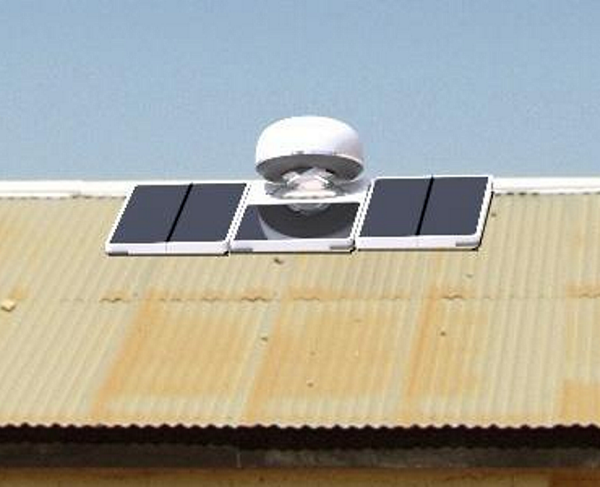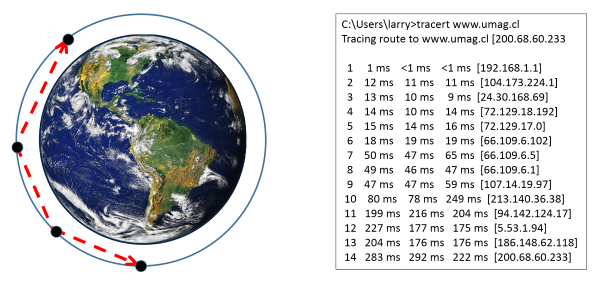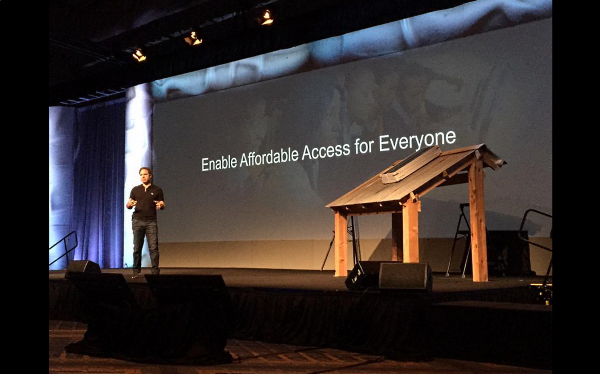aNewDomain — Greg Wyler and Elon Musk both have satellite Internet projects in the works, through OneWeb and SpaceX respectively, and I’ve tracked each of them for a while. There are few details on the SpaceX project — most of what I know is from an unauthorized cell phone video of a recruiting talk Musk gave. However, Wyler revealed more about OneWeb in a keynote at the Satellite 2015 Conference last month.
A Constellation of Satellites
Wyler’s plan is to launch a constellation of around 650 satellites into low-earth orbit sometime in 2017 with the goal of providing service in 2019, which is ahead of SpaceX’s proposed schedule. The service will offer 50 mbps, 30 ms latency connectivity through ground stations, which will cost $250. The ground stations will serve as hot-spots that provide Wi-Fi, LTE, 3G and 2G connectivity.
Wyler displayed a ground station prototype, highlighting just how easy they are to set up. The operator simply opens up the solar panels and presses the “on” button — around a five second install time. Here’s one being tested on top of a corrugated roof:

Due to the ease of deployment, establishing communication during or just after a natural disaster is a real possibility and makes disrupted terrestrial communication less necessary.
I created the following illustration (drawn to scale) to show that a packet could move from Los Angeles to the tip of Chile in five satellite hops, while the terrestrial trace of the route from my home in Los Angeles to southern Chile takes 14 hops.

Think of the implications of a Wi-Fi network with a low-latency, 50 mbps back-haul link to the Internet in every school or rural clinic in the world.
OneWeb has the rights to the Ku and Ka spectrum they will use, and has patent-pending technology to assure non-interference with geo-stationary satellites in those bands. Scale is critical to their business model — once the constellation is operating, the marginal cost of a new customer is very low.
While I have focused on OneWeb’s primary goal of providing Internet connectivity in developing nations and rural areas, Wyler also spoke of providing connectivity in aircraft (and ships at sea).

It Takes A Village
Of course, all of this is speculation for now. Some conference attendees and presenters were skeptical about Wyler’s project, pointing out that his low-cost satellites would have to be replaced every five years or so — a recurring expense. Critics also pointed out that the low-earth orbit satellites will be over oceans, Polar regions and other sparsely populated areas much of time.
That being said, Wyler has been able to attract backers and partners, each of which brings money and expertise to the table:
- Virgin Galactic: launch services
- Qualcomm: radio hardware
- Honeywell Aerospace: aircraft equipment and airtime services
- Rockwell Collins: satellite communication terminals for aircraft
Like a modern Internet company that follows the dictum “do what you do best and link to the rest,” OneWeb will focus on the backbone and market through local retail Internet service and cell phone providers.
One can also imagine OneWeb providing competition for conventional terrestrial ISPs in developed nations. I can dream of going over to Best Buy, picking up a OneWeb ground station, installing it on my roof and escaping the clutches of my ISP monopolist Time Warner Cable. I’m not holding my breath till that happens, but I’ll be keeping my eye on OneWeb’s ambitious project.
For some background on Wyler’s previous satellite company, O3B Networks, and more on his plans for OneWeb, check out this video:
For aNewDomain, I’m Larry Press.
All screenshots: Larry Press













